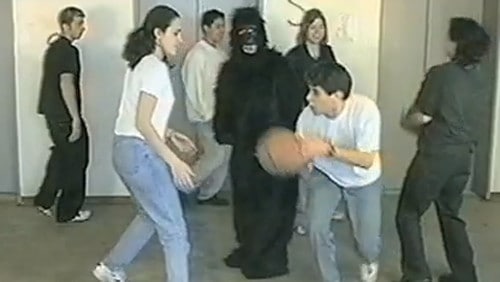
The test architect and speaker has run the Boston Marathon, is a prolific writer for various industry publications, maintains her own blog and website, and is constantly stretching her mind and challenging herself on the job.
She began to be aware of cognitive biases in her testing work some years ago and ever since has been pushing to offset them. The subject is so important to her that she developed a presentation, How Did I Miss that Bug? Managing Cognitive Bias in Testing, to share her findings and her concerns with others.
It’s become quite a popular presentation — one she will be delivering on July 11th in an XBOSoft webinar at 11am PST, with host Philip Lew.
We spoke to Gerie recently to learn more about testers’ biases, and her own as well. Here’s what she had to say:
Q: What was it that led you to choose a career in testing?
A: It wasn’t my idea! I had been doing some testing — the developer would hand me a list and I would test. But that wasn’t my job. Then I got laid off at the beginning of Y2K. However, they said they had a nice little job for me downstairs in testing. I said, “OK sure.” I took the job and learned how to do it.
Q: At what point during your testing career did you begin to focus on, or further explore, the cognitive biases that affect a tester’s work?
A: I attended a presentation by Peter Varhoff on the art of building great teams. He talked about a lot of the biases. I thought, “This would really apply to testing!” The one anecdote that really struck me was the inattentional blindness story, a study based on an experiment conducted by Simons and Chabris.

From professors Christopher Chabris and Dan Simons’ course at Harvard University on research methods in the Psychology Department, showing selective attention.
They took a group of people, split them into two, and told them to count the number of white shirts in the room. After they reported on how many white shirts they count, they were asked, “Did you notice anything else?”
No one saw the gorilla in the room. There was a gorilla in the room, but they were so focused on counting white shirts they didn’t see it. That is called inattentional blindness, or perceptual blindness. It’s not what you’re looking for, so you don’t see it. It’s the same in testing when you’re looking for all the requirements being met but then you may miss a big one.
Q: What are several common biases among testers?
A: You’ve got the inattentional blindness. Then there’s the anchoring effect, where we rely too much on one piece of information and exclude others that could work better. The confirmation bias — tendency to confirm your initial work — is a third major one.
Q: What are your own personal biases?
A: I do tend to have confirmation bias, and some the anchoring. And don’t we all have an inattentional blindness? I do. I didn’t notice the gorilla. I try to adjust in my personal life for my biases. Am I looking at this from all angles? Do I have an issue? I do try to apply it. In running, people are biased on how much running they need to do to train for races. My early marathons I trained and trained and trained but later not so much. I changed my bias.
Q: How can testers, or testing managers, recognize their biases and adjust to counterbalance them?
A: One thing you can do is encourage them to think and not just go from the requirements to the test cases. Ask yourself: How is this going to affect the customer?
Q: How do cognitive biases play out with agile teams that do their own testing, rather than use an independent test expert?
A: Confirmation can come into play here. However, with agile you are coding from the test. That might help to prevent biases from getting in the way. I did a keynote last fall on groupthink, and how it affects agile teams. Groupthink is a social phenomenon when people say they agree because a strong leader persuades them and they fear social repercussions. Agile teams that are co-located are susceptible. You have to manage your own biases and mindsets to deal with group think, make sure that everyone gets to speak. There may be more than one leader on a team and no one leader should overpower others.
One way to balance your testing biases is to constantly improve your testing process to include or exclude steps that might represent a cognitive prejudice. You can make better — and fewer — decisions with a finely tuned process. Learn more about improving you test process by downloading the white paper Test Process Improvement and Assessment.
Don’t forget to register:
How Did I Miss that Bug? Managing Cognitive Bias in Testing on July 11th at 11am PST in an XBOSoft webinar.

Leave A Comment